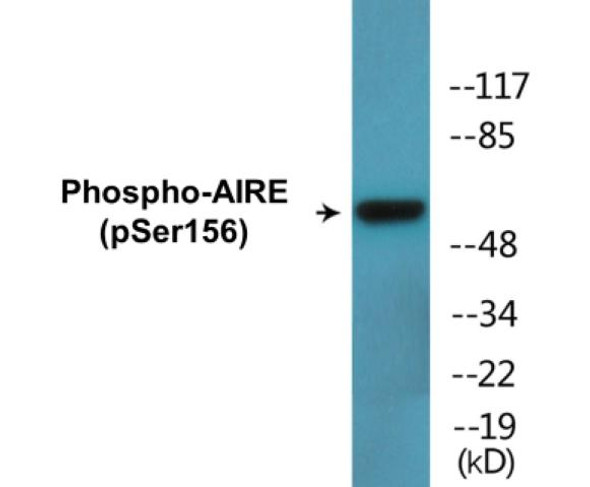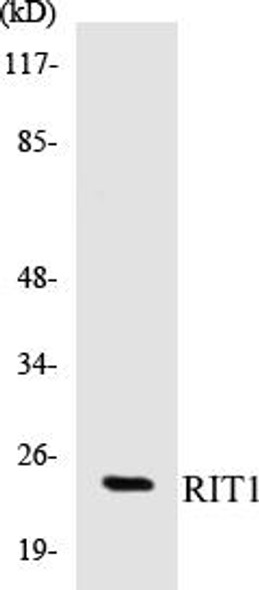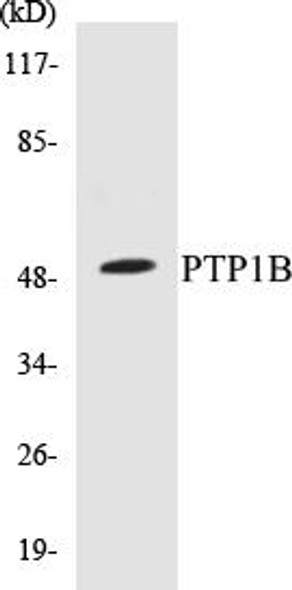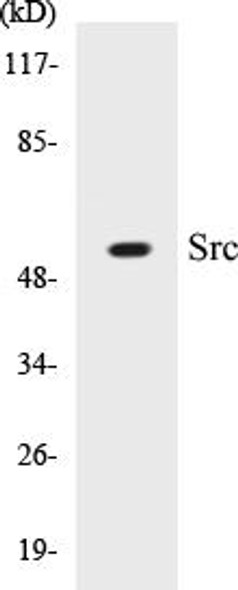Description
AIRE Colorimetric Cell-Based ELISA Kit
The AIRE Colorimetric Cell-Based ELISA Kit is specifically engineered for the precise measurement of angiogenin levels in various biological samples, including human serum, plasma, and cell culture supernatants. With its exceptional sensitivity and specificity, this kit guarantees accurate and consistent results, making it a valuable tool for a diverse range of research studies.Angiogenin is a pivotal protein vital for angiogenesis, the process of creating new blood vessels, and plays a critical role in cell proliferation.
Its involvement in various health conditions such as cancer, cardiovascular diseases, and neurodegenerative disorders underscores its significance as a key biomarker for understanding these diseases and exploring potential treatment options.Invest in the AIRE Colorimetric Cell-Based ELISA Kit to unlock new insights into angiogenin biology and its implications in disease progression and therapy development.
| Product Name: | AIRE Colorimetric Cell-Based ELISA |
| Product Code: | CBCAB00517 |
| ELISA Type: | Cell-Based |
| Target: | AIRE |
| Reactivity: | Human, Mouse |
| Dynamic Range: | > 5000 Cells |
| Detection Method: | Colorimetric 450 nmStorage/Stability:4°C/6 Months |
| Format: | 96-Well Microplate |
The AIRE Colorimetric Cell-Based ELISA Kit is a convenient, lysate-free, high throughput and sensitive assay kit that can detect AIRE protein expression profile in cells. The kit can be used for measuring the relative amounts of AIRE in cultured cells as well as screening for the effects that various treatments, inhibitors (ie siRNA or chemicals), or activators have on AIRE.
Qualitative determination of AIRE concentration is achieved by an indirect ELISA format. In essence, AIRE is captured by AIRE-specific primary antibodies while the HRP-conjugated secondary antibodies bind the Fc region of the primary antibody. Through this binding, the HRP enzyme conjugated to the secondary antibody can catalyze a colorimetric reaction upon substrate addition. Due to the qualitative nature of the Cell-Based ELISA, multiple normalization methods are needed:
| 1. | A monoclonal antibody specific for human GAPDH is included to serve as an internal positive control in normalizing the target absorbance values. |
| 2. | Following the colorimetric measurement of HRP activity via substrate addition, the Crystal Violet whole-cell staining method may be used to determine cell density. After staining, the results can be analysed by normalizing the absorbance values to cell amounts, by which the plating difference can be adjusted. |
| Database Information: | Gene ID: 326, UniProt ID: O43918, OMIM: 109100/240300/607358, Unigene: Hs.129829 |
| Gene Symbol: | AIRE |
| Sub Type: | None |
| UniProt Protein Function: | AIRE: Transcriptional regulator that binds to DNA as a dimer or as a tetramer, but not as a monomer. Binds to G-doublets in an A/T-rich environment; the preferred motif is a tandem repeat of 5'-. ATTGGTTA-3' combined with a 5'-TTATTA-3' box. Binds to nucleosomes. Binds to chromatin and interacts selectively with histone H3 that is not methylated at 'Lys-4', not phosphorylated at 'Thr-3' and not methylated at 'Arg-2'. Functions as a sensor of histone H3 modifications that are important for the epigenetic regulation of gene expression. Functions as a transcriptional activator and promotes the expression of otherwise tissue-specific self-antigens in the thymus, which is important for self tolerance and the avoidance of autoimmune reactions. Defects in AIRE are a cause of autoimmune poly- endocrinopathy candidiasis ectodermal dystrophy (APS1). An autosomal recessive disease characterized by the combination of chronic mucocutaneous candidiasis, hypoparathyroidism and Addison disease. Symptoms of mucocutaneous candidiasis manifest first, followed by hypotension or fatigue occurring as a result of Addison disease. APS1 is associated with other autoimmune disorders including diabetes mellitus, vitiligo, alopecia, hepatitis, pernicious anemia and primary hypothyroidism. Most of the mutations alter the nucleus-cytoplasm distribution of AIRE and disturb its association with nuclear dots and cytoplasmic filaments. Most of the mutations also decrease transactivation of the protein. The HSR domain is responsible for the homomultimerization activity of AIRE. All the missense mutations of the HSR and the SAND domains decrease this activity, but those in other domains do not. The AIRE protein is present in soluble high-molecular-weight complexes. Mutations in the HSR domain and deletion of PHD zinc fingers disturb the formation of these complexes. 4 isoforms of the human protein are produced by alternative splicing. |
| UniProt Protein Details: | Protein type:Transcription factor Chromosomal Location of Human Ortholog: 21q22.3 Molecular Function:chromatin binding; histone binding; protein binding; transcription cofactor activity; zinc ion binding Biological Process: immune response; positive regulation of transcription from RNA polymerase II promoter; positive regulation of transcription, DNA-dependent; regulation of transcription, DNA-dependent Disease: Autoimmune Polyendocrine Syndrome, Type I, With Or Without Reversible Metaphyseal Dysplasia |
| NCBI Summary: | This gene encodes a transcriptional regulator that forms nuclear bodies and interacts with the transcriptional coactivator CREB binding protein. The encoded protein plays an important role in immunity by regulating the expression of autoantigens and negative selection of autoreactive T-cells in the thymus. Mutations in this gene cause the rare autosomal-recessive systemic autoimmune disease termed autoimmune polyendocrinopathy with candidiasis and ectodermal dystrophy (APECED). [provided by RefSeq, Jun 2012] |
| UniProt Code: | O43918 |
| NCBI GenInfo Identifier: | 3334119 |
| NCBI Gene ID: | 326 |
| NCBI Accession: | O43918.1 |
| UniProt Secondary Accession: | O43918,O43922, O43932, O75745, B2RP50, |
| UniProt Related Accession: | O43918 |
| Molecular Weight: | 36,501 Da |
| NCBI Full Name: | Autoimmune regulator |
| NCBI Synonym Full Names: | autoimmune regulator |
| NCBI Official Symbol: | AIRE |
| NCBI Official Synonym Symbols: | APS1; APSI; PGA1; AIRE1; APECED |
| NCBI Protein Information: | autoimmune regulator |
| UniProt Protein Name: | Autoimmune regulator |
| UniProt Synonym Protein Names: | Autoimmune polyendocrinopathy candidiasis ectodermal dystrophy protein; APECED protein |
| Protein Family: | Autoimmune regulator |
| UniProt Gene Name: | AIRE |
| UniProt Entry Name: | AIRE_HUMAN |
| Component | Quantity |
| 96-Well Cell Culture Clear-Bottom Microplate | 2 plates |
| 10X TBS | 24 mL |
| Quenching Buffer | 24 mL |
| Blocking Buffer | 50 mL |
| 15X Wash Buffer | 50 mL |
| Primary Antibody Diluent | 12 mL |
| 100x Anti-Phospho Target Antibody | 60 µL |
| 100x Anti-Target Antibody | 60 µL |
| Anti-GAPDH Antibody | 60 µL |
| HRP-Conjugated Anti-Rabbit IgG Antibody | 12 mL |
| HRP-Conjugated Anti-Mouse IgG Antibody | 12 mL |
| SDS Solution | 12 mL |
| Stop Solution | 24 mL |
| Ready-to-Use Substrate | 12 mL |
| Crystal Violet Solution | 12 mL |
| Adhesive Plate Seals | 2 seals |
The following materials and/or equipment are NOT provided in this kit but are necessary to successfully conduct the experiment:
- Microplate reader able to measure absorbance at 450 nm and/or 595 nm for Crystal Violet Cell Staining (Optional)
- Micropipettes with capability of measuring volumes ranging from 1 µL to 1 ml
- 37% formaldehyde (Sigma Cat# F-8775) or formaldehyde from other sources
- Squirt bottle, manifold dispenser, multichannel pipette reservoir or automated microplate washer
- Graph paper or computer software capable of generating or displaying logarithmic functions
- Absorbent papers or vacuum aspirator
- Test tubes or microfuge tubes capable of storing ≥1 ml
- Poly-L-Lysine (Sigma Cat# P4832 for suspension cells)
- Orbital shaker (optional)
- Deionized or sterile water
*Note: Protocols are specific to each batch/lot. For the correct instructions please follow the protocol included in your kit.
| Step | Procedure |
| 1. | Seed 200 µL of 20,000 adherent cells in culture medium in each well of a 96-well plate. The plates included in the kit are sterile and treated for cell culture. For suspension cells and loosely attached cells, coat the plates with 100 µL of 10 µg/ml Poly-L-Lysine (not included) to each well of a 96-well plate for 30 minutes at 37°C prior to adding cells. |
| 2. | Incubate the cells for overnight at 37°C, 5% CO2. |
| 3. | Treat the cells as desired. |
| 4. | Remove the cell culture medium and rinse with 200 µL of 1x TBS, twice. |
| 5. | Fix the cells by incubating with 100 µL of Fixing Solution for 20 minutes at room temperature. The 4% formaldehyde is used for adherent cells and 8% formaldehyde is used for suspension cells and loosely attached cells. |
| 6. | Remove the Fixing Solution and wash the plate 3 times with 200 µL 1x Wash Buffer for five minutes each time with gentle shaking on the orbital shaker. The plate can be stored at 4°C for a week. |
| 7. | Add 100 µL of Quenching Buffer and incubate for 20 minutes at room temperature. |
| 8. | Wash the plate 3 times with 1x Wash Buffer for 5 minutes each time. |
| 9. | Add 200 µL of Blocking Buffer and incubate for 1 hour at room temperature. |
| 10. | Wash 3 times with 200 µL of 1x Wash Buffer for 5 minutes each time. |
| 11. | Add 50 µL of 1x primary antibodies (Anti-AIRE Antibody and/or Anti-GAPDH Antibody) to the corresponding wells, cover with Parafilm and incubate for 16 hours (overnight) at 4°C. If the target expression is known to be high, incubate for 2 hours at room temperature. |
| 12. | Wash 3 times with 200 µL of 1x Wash Buffer for 5 minutes each time. |
| 13. | Add 50 µL of 1x secondary antibodies (HRP-Conjugated AntiRabbit IgG Antibody or HRP-Conjugated Anti-Mouse IgG Antibody) to corresponding wells and incubate for 1.5 hours at room temperature. |
| 14. | Wash 3 times with 200 µL of 1x Wash Buffer for 5 minutes each time. |
| 15. | Add 50 µL of Ready-to-Use Substrate to each well and incubate for 30 minutes at room temperature in the dark. |
| 16. | Add 50 µL of Stop Solution to each well and read OD at 450 nm immediately using the microplate reader. |
(Additional Crystal Violet staining may be performed if desired – details of this may be found in the kit technical manual.)






